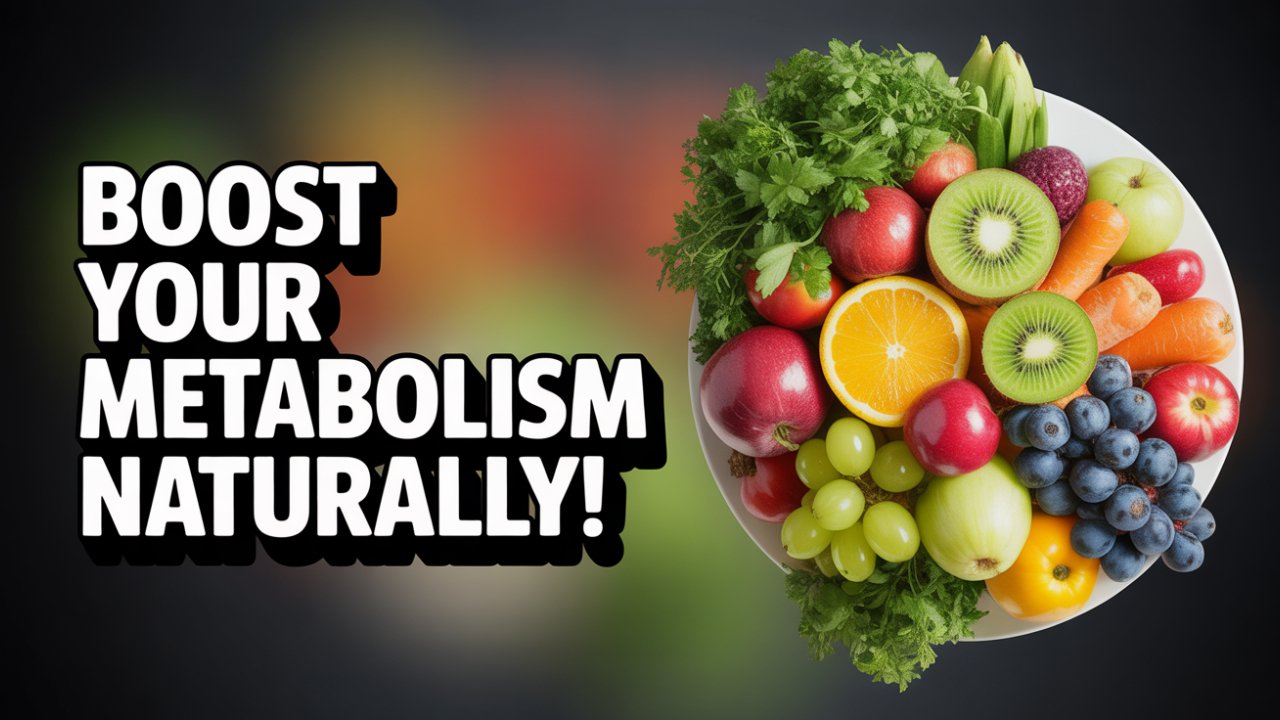Let’s be honest, everyone talks about metabolism. You hear it everywhere. “My metabolism is just slow.” “This one weird trick will supercharge your metabolism.” “Whatever you do, don’t eat after 8 PM, you’ll wreck your metabolism.” The word gets thrown around so much in gyms, magazines, and all over social media that it’s turned into this fuzzy, almost magical concept that we blame for our weight. But that’s just a tiny, tiny piece of the puzzle. The truth is, your metabolism isn’t just about what the scale says. It’s the silent, incredibly powerful engine humming away inside every single one of your cells. It’s the grand total of every chemical reaction that keeps you alive. Understanding this engine—what it really is and how it actually works—isn’t just some fitness hack. It’s step one to taking real control of your energy, your health, and your future. So, let’s ditch the myths and get to the heart of what your metabolism is, and why it’s one of the most important things you can understand about your own body.
I want you to imagine your body is a sprawling, impossibly complex city. This city has buildings that need constant upkeep, busy transport networks, and instant communication systems, and it needs a mind-boggling amount of energy just to keep the lights on. Every single day, raw materials—the food and drinks you consume—show up at the city gates. Metabolism is the entire economy of that city. It’s the whole process that takes those raw materials and converts them into everything the city needs to not just get by, but to flourish. It’s a 24/7 operation that never clocks out, not even when you’re sound asleep. It is the constant hum of activity that is life. So when we talk about metabolism, we’re not just talking about one little thing; we’re talking about the sum of all the processes that keep your personal city running.
So what is it, really? At its core, metabolism is the set of all the life-sustaining chemical reactions happening inside our cells. These thousands of reactions are juggling three main jobs all at once. First, they take the energy locked inside your food and convert it into a form your cells can actually use. Second, they turn that same food into the essential building blocks for things like proteins, fats, and DNA—the very stuff you’re made of. And third, they’re in charge of cleanup, getting rid of the waste products left over from all that work.
Let’s go back to our city. The first job is like the city’s power grid. It takes in raw fuel—truckloads of coal, let’s say, which represent the carbs, fats, and proteins in your food—and processes it in power plants. The output isn’t just smoke and heat; it’s refined, usable electricity that gets sent to every last building and streetlamp. In your body, those power plants are called mitochondria, and the “electricity” they produce is a molecule called Adenosine Triphosphate, or ATP. ATP is the body’s universal energy currency. It pays for everything from the muscle contractions you use to walk, to the neurons firing in your brain as you think, to the steady beat of your heart.
The second job is the city’s manufacturing and construction industry. It takes those simple raw materials—sugars, amino acids, and fatty acids—and builds whatever the city needs. When you work out and create tiny tears in your muscles, it’s your metabolism that directs the crews to repair and reinforce them, making them stronger. When you get a paper cut, metabolism is the foreman orchestrating the complex job of building new skin cells to heal the wound. It’s responsible for all the construction, maintenance, and even building storage warehouses—like your liver, muscles, and fat tissue—to tuck away extra energy for later.
Finally, job number three is waste management. Just like any busy city, all this activity creates trash. A healthy metabolism is also a super-efficient sanitation system, breaking down and packaging up waste products so they can be safely shipped out through your kidneys, lungs, and skin. Without this, toxic junk would pile up and bring the entire city to a screeching halt. So you see, metabolism isn’t just a switch you can flip to “fast” or “slow.” It’s this whole, interconnected symphony of energy production, construction, and sanitation, all happening in perfect harmony, every second of every day.
To really get how this metabolic city works, we need to look at its two fundamental economic policies: demolition and construction. In biology, we call these catabolism and anabolism. They might sound a little intimidating, but they’re just two sides of the same metabolic coin, locked in a constant, balanced cycle.
First up, catabolism. This is the “breakdown” phase. Think of it as the demolition and recycling crews of our city. When big, complicated shipments arrive—a slice of pizza, a handful of almonds—they’re too big to be used as-is. Catabolism is the process of smashing these large molecules into their smaller, simpler parts. Carbs are broken down into simple sugars like glucose. Proteins are taken apart into individual amino acids. Fats are split into fatty acids and glycerol.
This process of breaking bonds does something amazing: it releases energy. That energy is captured in the form of that all-important ATP molecule. This is the power that fuels everything else. The classic example is digestion, followed by cellular respiration, where glucose is systematically dismantled inside our cells to generate a huge amount of ATP. So, catabolism is destructive, but in the most productive way imaginable. It tears things down to get their energy and their parts.
And what do you do with all that energy and all those parts? You build. That brings us to the other side of the coin: anabolism. Anabolism is the “building up” phase. This is the city’s construction crew. Anabolic reactions take the simple molecules made by catabolism—the glucose, amino acids, and fatty acids—and use the energy from ATP to assemble them into new, complex things the body needs. This process costs energy. You have to spend energy to build things.
When your body heals that cut on your finger, it’s using anabolic processes to create new proteins to form new skin. When you lift weights and your muscles get bigger, that’s anabolism at work, weaving amino acids into new muscle fiber. A child growing taller, your body creating hormones, a broken bone mending—all anabolic. When you eat more sugar than you need right away, anabolism links those glucose molecules together into a bigger molecule called glycogen, which gets stored in your liver and muscles like a backup battery.
The key here is that anabolism and catabolism are totally dependent on each other. They’re in a constant, dynamic dance. The energy released by catabolism is what powers anabolism. You can’t have one without the other. When you’re active or haven’t eaten in a while, catabolism takes the lead, breaking down your stores for energy. Right after a meal, anabolism kicks into high gear, using the new nutrients to build, repair, and save for later. This beautiful balance is the very essence of a healthy metabolism.
Okay, so now that we know what metabolism is—this balance of breaking down and building up—we can finally get to the question everyone wants to know the answer to: what’s up with the rate? Why can some people eat whatever they want, while others feel like their engine is just idling? The speed of your metabolic engine is your metabolic rate, and it’s actually a combination of a few things that add up to your Total Daily Energy Expenditure, or TDEE.
The biggest piece of the pie, making up about 60% to 75% of your daily calorie burn, is your Basal Metabolic Rate, or BMR. This is the energy your body needs just to exist, to keep the lights on while you’re at complete rest. Think of it as the power draw of our city during a total lockdown. Even when everyone’s asleep, the grid has to power the hospitals (your organs), pump the water (your circulation), and run the heat (your body temperature). It’s the non-negotiable cost of being alive.
The second piece is the Thermic Effect of Food, or TEF. This is about 10% of your energy use. Simply put, you have to burn calories to get calories. The acts of chewing, digesting, and storing food all cost energy. And fun fact: different foods have different costs. Protein is the most “expensive” to process, using up to 20-30% of its own calories in digestion. Carbs are in the middle at 5-10%, and fats are the cheapest, at only 0-5%.
The last piece, and the one that changes the most from person to person, is the energy you burn from physical activity. This is everything from a planned workout to something called Non-Exercise Activity Thermogenesis, or NEAT. NEAT is all the calories you burn just living your life—fidgeting, walking to your car, doing chores, typing, even just holding yourself upright. This can be wildly different for different people, sometimes by hundreds of calories a day. It’s often the secret ingredient for people who seem to have a “fast metabolism”—they’re just moving more all day long.
So what sets your personal BMR? A few things, and a lot of them aren’t really in your control. Genetics is a big one. Body size matters, too; a bigger body simply has more cells that need energy. Sex plays a role, as men tend to have more muscle mass than women of the same weight, which raises BMR. Age is a famous one; metabolism does tend to slow down as we get older, but a huge part of that is because we tend to lose muscle mass as we age—which is not a guarantee. Finally, hormones are like the master thermostat, especially your thyroid hormones.
Hearing about all the things you can’t control, like your genes and your age, can feel a little bit discouraging. It’s easy to fall into the trap of thinking you’re stuck with what you’ve got. But that’s just another myth. While you can’t rewrite your DNA, you absolutely have levers you can pull to fine-tune your metabolic engine.
The single most powerful lever you can pull is building and holding on to lean muscle. Muscle tissue is metabolically “active.” It burns calories just by existing, even when you’re watching TV. Fat tissue, on the other hand, is pretty sluggish. A pound of muscle burns roughly two to three times as many calories at rest as a pound of fat. So, the more muscle you have, the higher your BMR will be, 24/7. The best way to build muscle is through resistance training—lifting weights, using bands, or doing bodyweight exercises like push-ups and squats. This sends a loud and clear signal to your body to build and maintain this metabolically expensive tissue.
The second lever is how you fuel your engine. This isn’t about so-called “metabolism-boosting” foods. The idea that a dash of cayenne pepper will magically melt fat is, sorry to say, a myth; the effects are tiny and fleeting. What really matters is giving your body consistent, high-quality fuel. That starts with getting enough protein. As we learned, protein has the highest thermic effect, so your body works harder to digest it. But more importantly, protein provides the building blocks you need to actually build that muscle. You can’t build a bigger engine without the parts! It’s also critical to avoid super low-calorie crash diets. While you need a calorie deficit to lose weight, drastic cuts tell your body a famine is coming. In response, it smartly slows down your metabolism to conserve energy. Fueling your body properly tells it that everything is okay and it’s safe to keep the fires burning bright.
The final levers are the basic, non-negotiable habits: sleep and hydration. Water is where almost all metabolic reactions happen. Being even a little dehydrated can gum up the works and slow things down. And sleep? It’s non-negotiable. Not getting enough quality sleep messes with your key metabolic hormones. It can raise cortisol, a stress hormone tied to fat storage, and disrupt ghrelin and leptin, the hormones that control hunger and fullness. Getting good, consistent sleep is like letting your city’s control center run its nightly diagnostics, making sure everything is ready for the next day. By focusing on these things—building muscle, eating smart, sleeping well, and staying hydrated—you can become the master of your own metabolic health.
We’ve journeyed through the bustling city inside you, from its power plants to its construction sites, and looked at the very engine that runs the whole show. By now, it should be crystal clear that your metabolism is so much more than a dial you turn for weight loss. It is the absolute foundation of your health. When your metabolism is running well, it means your body is great at turning food into energy, it’s a pro at repairing itself, and it’s efficiently taking out the trash. That is the definition of being full of life.
On the flip side, when this system gets out of whack, it sets the stage for a lot of chronic diseases. Metabolic syndrome—a group of conditions including high blood pressure, high blood sugar, and unhealthy cholesterol levels—is a direct result of a struggling metabolism. This syndrome dramatically increases the risk for heart disease, stroke, and type 2 diabetes. Research is also linking poor metabolic health to a whole range of other issues, from liver disease to certain cancers and even brain disorders like dementia. So, paying attention to your metabolism isn’t just about looking a certain way. It’s one of the most powerful forms of preventative medicine you have. It’s about making sure your internal city has everything it needs to not only run smoothly day-to-day, but to handle all the curveballs life throws at it.
In the end, the word “metabolism” shouldn’t make you feel confused or frustrated. It should make you feel empowered. It’s not some fixed destiny written in your genes. It’s your own personal, dynamic, and responsive engine for life. By understanding how it works—how it breaks things down for fuel and builds you back up—and by knowing which levers you can actually pull, you become the chief engineer of your own health. You gain the power to make choices that ripple through every single cell in your body.
If this deep dive into the powerful engine inside you was helpful, make sure to subscribe and ring that notification bell for more videos that break down the science of your health. We’d also love to hear from you down in the comments: what’s one myth about metabolism you’re happy to finally let go of? Or what’s another topic about the human body you want us to tackle next? Thanks for watching.





